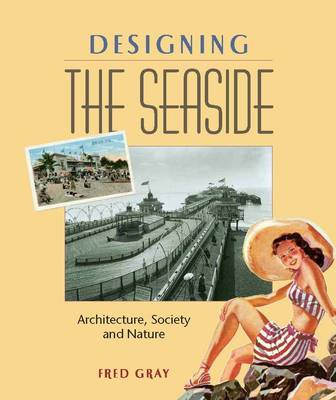
- Retrait gratuit dans votre magasin Club
- 7.000.000 titres dans notre catalogue
- Payer en toute sécurité
- Toujours un magasin près de chez vous
- Retrait gratuit dans votre magasin Club
- 7.000.000 titres dans notre catalogue
- Payer en toute sécurité
- Toujours un magasin près de chez vous
40,95 €
+ 81 points
Format
Description
In Alfred Hitchcock's To Catch a Thief, a seaside resort was the setting for thievery and intrigue. Fred Astaire and Ginger Rogers tap-danced their way to fame at a Brighton resort in The Gay Divorcee. The seaside resort has always held a special fascination, a place of containment and leisure that has a unique form in the physical landscape: towering hotels, shop-lined boardwalks, and sprawling beaches. Fred Gray delves into the history of seaside architecture here in Designing the Seaside, writing the rich and international story of the seaside resort's diverse structures from the eighteenth century through today. Gray is interested not only in the physical structures but also the cultural mores they represent--the "yearly holiday," and our attitudes about leisure. The coastal landscape has been transformed by this geography of relaxation, and Gray considers the physical and cultural shifts that occurred when shops, boardwalks, and hotels buried sand dunes and marshes beneath their beams. He examines the design processes that went into creating the diverse buildings and spaces within a seaside resort, giving full attention to ephemeral structures such as pavilions and summer gift shops as well as the trademark hotel buildings, fairgrounds, and open spaces. Designing the Seaside also reveals how events such as beauty pageants made seaside resorts into sites of debate over conflicted issues of sexuality and morality. Drawing on a diverse array of historical material--photographs, guidebooks, postcards, and posters--Fred Gray offers a fascinating account of the cultural and social symbolism of the seaside resort and its role in the modern landscape.
Spécifications
Parties prenantes
- Auteur(s) :
- Editeur:
Contenu
- Nombre de pages :
- 400
- Langue:
- Anglais
Caractéristiques
- EAN:
- 9781861892744
- Date de parution :
- 01-06-06
- Format:
- Livre relié
- Format numérique:
- Genaaid
- Dimensions :
- 221 mm x 259 mm
- Poids :
- 1505 g







